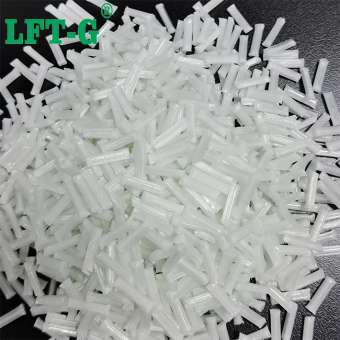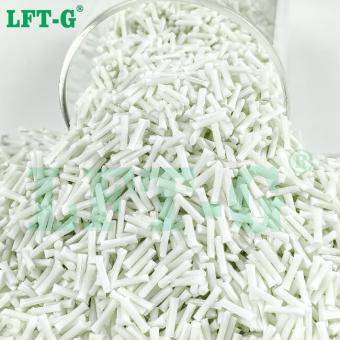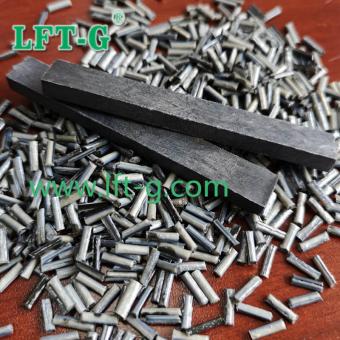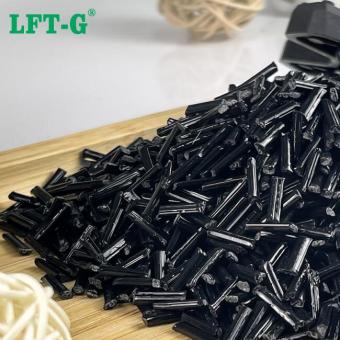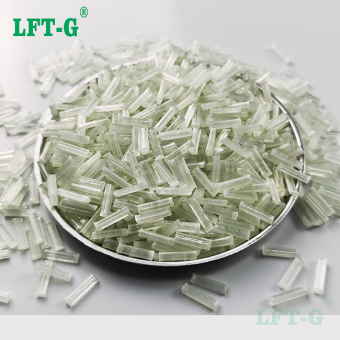-
Homopolímero de alta resistencia PP Compuesto de fibra de vidrio largo para la durabilidadNuestro homopolímero de alto rendimiento PP Long Glass Fiber Composite ofrece alta resistencia excepcional y durabilidad, lo que lo convierte en una solución ideal para aplicaciones industriales exigentes y componentes automotrices .
- Compuesto de fibra de vidrio largo
- Polipropileno de alta resistencia
- PP Material reforzado con fibra de vidrio
- Compuesto industrial de PP
- PP Composite para Automotive
- Refuerzo de plástico de alto rendimiento
Etiquetas :
-
Alto rendimiento para moldeo por inyección Fabricante de PP de fibra de vidrio larga PP ChinaNuestro polímero reforzado con fibra de vidrio con de alto rendimiento ofrece una resistencia y durabilidad excepcionales, perfecta para el moldeo de inyección PP Aplicaciones.
- Polímero reforzado con fibra de vidrio
- Material PP de alto rendimiento
- PP de moldeo por inyección
- Copolymer Material plástico
- Termoplástico reforzado
- Plástico duradero para automotriz
Etiquetas :
-
Lft Fibra larga Fibra Reforzada Propiedades mecánicas altasEl material de vista reforzado con fibra de carbono LFT LFT ofrece una resistencia, rigidez y resistencia excepcionales a altas temperaturas y productos químicos . Su durabilidad superior y estabilidad dimensional lo hacen ideal para exigentes aplicaciones aeroespaciales, automotrices e industriales , donde el rendimiento y la confiabilidad son cruciales.
- Compuestos de resina CFRP de cetona poliéter
- China Factory Polyether Ether cetona
- Materiales de vista larga de fibra de carbono
- OEM ODM Fabricante Peek Plastic
- Plastic Matetials Molde de inyección Peek
- POEK Polymer Black Color Engineering Plastic
Etiquetas :
-
LFT Long fibra larga PPS reforzado PPS de alta mecánica plásticoEl material PPS reforzado con fibra de carbono larga LFT combina la estabilidad térmica superior y la alta resistencia mecánica , lo que lo hace perfecto para aplicaciones de alto rendimiento . Su excelente resistencia al desgaste, productos químicos y altas temperaturas asegura una confiabilidad duradera en entornos desafiantes .
- Compuestos de resina PPS CFRP
- Sulfuro de polifenileno de fábrica de China
- Materiales de PPS llenos de fibra de carbono
- OEM ODM Fabricante PPS Plastic
- PPS de molde de inyección de materias primas de plástico PPS
- PPS Polymer Black Color Engineering Plastic
Etiquetas :
-
Nylon reforzado con fibra larga LFT 12 propiedades mecánicas altas plásticoEl material PA12 reforzado con fibra de carbono LFT combina resistencia, rigidez y estabilidad térmica , lo que lo hace perfecto para aplicaciones exigentes en los sectores automotrices e industriales. Su resistencia superior al desgaste y la fatiga asegura un rendimiento duradero, incluso en condiciones duras .
- Compuestos de resina PA12 CFRP
- Gránulos de nylon de fábrica de China
- Fibra de carbono larga llena de poliamida 12
- OEM ODM Fabricante Nylon Plastic
- Nylon de molde de inyección de materias primas de plástico
- Polímero de nylon color negro
Etiquetas :
-
Nylon reforzado con fibra larga LFT 66 compuestos de alta resistenciaEl material PA66 reforzado con fibra de vidrio LFT ofrece resistencia excepcional, resistencia al impacto y estabilidad dimensional . Con sus propiedades mecánicas superiores, es ideal para aplicaciones de alto rendimiento en automotriz, componentes electrónicos e industriales , proporcionando durabilidad y confiabilidad a largo plazo.
- PA66 GF Resina
- Fibra de vidrio largo llena de poliamida 66
- Polímero de nylon color natural
Etiquetas :
-
Xiamen LFT-G Poliamida 66 Resistencia de desgaste de fibra de carbono largo para autopartesLas principales ventajas del nylon 6 son su rigidez y resistencia a la abrasión . Además, este material tiene una excelente resistencia al impacto, resistencia al desgaste y propiedades aislantes eléctricas.
- PA66 Materias primas de plástico inyección moldeada
- PA66 pellets puro reciclado liviano
- Fibra de carbono larga PA66 Color negro natural
- Gránulos PA66 LCF en su lugar de polímeros de metal
- Aplicación electrónica de baja guerra
- Auto parte y piezas aeroespaciales
Etiquetas :
-
Poliamida de nylon de alta calidad 6 plásticos reforzados con fibra de carbono largoLa propiedad física más notable de la poliamida es su excelente resistencia al desgaste debido a su bajo coeficiente de fricción creado por sus propiedades de lubricantes.
- PA6 GFRP Engineering Plastic
- El fabricante vende directamente el buen precio plástico
- Polímeros modificados por resina termoplástica
- Servicio de personalización Fabricante de China
- Piezas de automóviles livianos en su lugar de metal
- Compuestos hechos en China Alta dureza
Etiquetas :
-
Polímero reforzado con fibra de carbono larga de polipropileno homopolímero para automotrizHomopolímero PP Compuestos de fibra de carbono largo Ofrecen excelentes propiedades mecánicas, que incluyen alta resistencia, rigidez y resistencia al impacto. Estos materiales son ideales para aplicaciones de alto rendimiento en Sectores automotrices, aeroespaciales e industriales, donde las soluciones livianas pero duraderas son esenciales. Con la estabilidad dimensional superior y la resistencia térmica, los compuestos de fibra de carbono larga homopolímero PP proporcionan una alternativa confiable a los metales en entornos exigentes .
- Fibra de carbono Alta tenacidad PP
- Fabricación de China de resina de polipropileno
- Resina termoplástica hecha en China
- PP Fibra de carbono Filamento CF CFRP
- EDM Wholesell en stock PP Materials
- Mejor precio PP Materiales de alta resistencia
Etiquetas :
-
Xiamen LFT-G HDPE Relleno Long Glass Fiber Thermoplasitc Compuestos reforzadosHDPE-LGF Los compuestos de polietileno (HDPE)/ fibra de vidrio de alta densidad (LGF) se prepararon mediante mecanismo de extrusión de brotes gemelas, y se estudiaron las propiedades mecánicas y el comportamiento de cristalización no isotérmica de los compuestos HDPE/ LGF. Los resultados muestran que la resistencia de impacto del compuesto puede mejorarse mediante Mah-G-Poe, y el enlace de interfaz entre la fibra de vidrio y el HDPE es buena.
- HDPE Relleno LGF20
- Materiales compuestos HDPE LGF
- resina de plástico HDPE reforzado
- HDPE reforzado con fibra de vidrio largo
- Compuestos LGF HDPE termoplásticos
- resina HDPE con relleno
Etiquetas :
-
China LFT Termoplástica poliuretano tpu fibra de vidrio largo compuesto reforzadoNúmero de producto: TPU-NA-LGF Product Fiber Especification: 20%-60% Características del producto: alta tenacidad, alta resistencia, baja absorción de agua, alta estabilidad dimensional, resistencia química, buena apariencia del producto.
- Bajo precio de absorción de agua bien
- calzado Las zapatillas usan el fabricante de China
- Plástico columnar de partículas
- Moldeo por inyección de resina TPU natural
- Suministros industriales Film Automotive
- Muestra de impresión 3D TPU disponible
Etiquetas :
-
LFT PPS de polifenileno sulfuro PPS PPS reforzado con fibra de vidrioIngeniero PPS Larga de fibra de vidrio largo reforzada es un tipo de materiales de plástico modifeídico de ingeniería de PPS reforzados con fibra de vidrio largo
- PPS lleno de fibra de vidrio
- Polifenileno sulfuro PPS anti -envejecimiento
- Gránulos de polímero PPS
- PP modificado
- PP de plástico reforzado con termoplástico
Etiquetas :

 correo electrónico
correo electrónico español
español English
English français
français Deutsch
Deutsch русский
русский italiano
italiano português
português العربية
العربية 日本語
日本語 한국의
한국의 中文
中文












